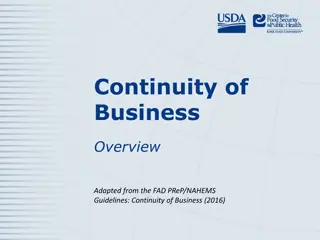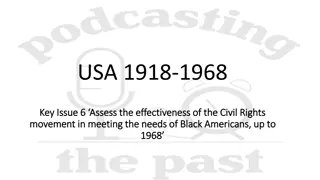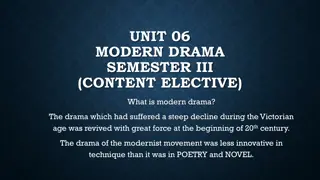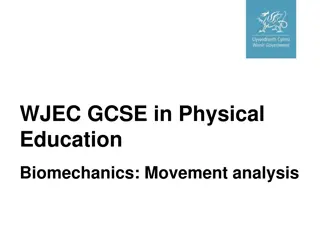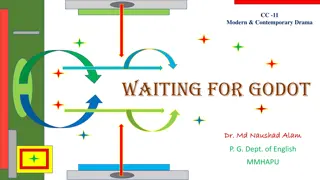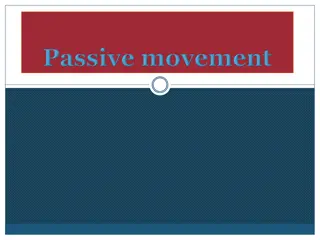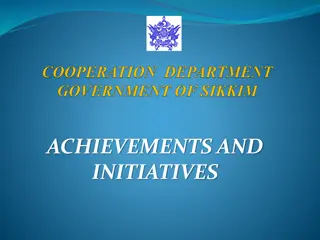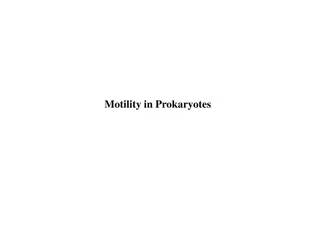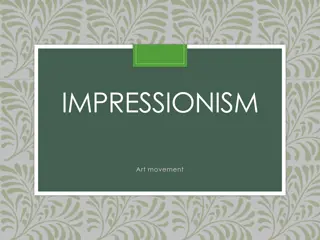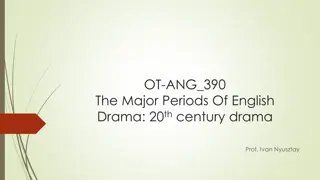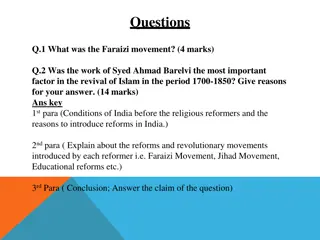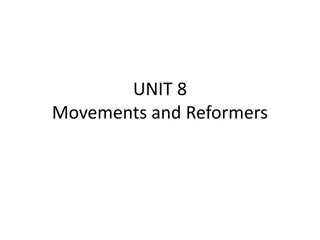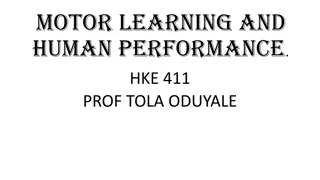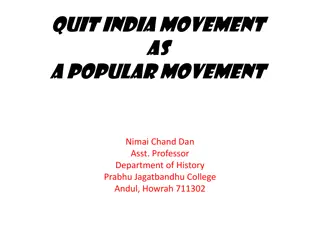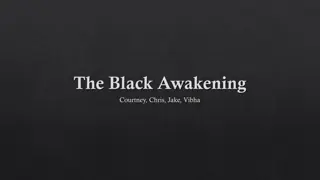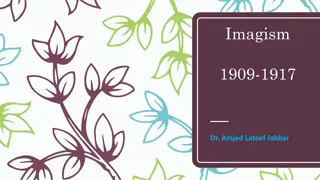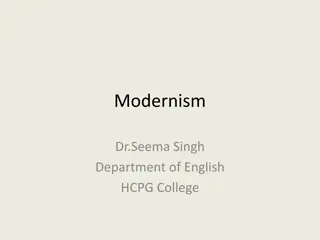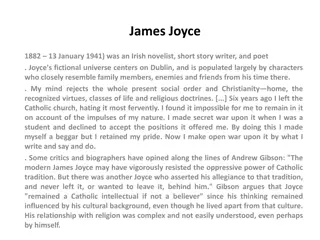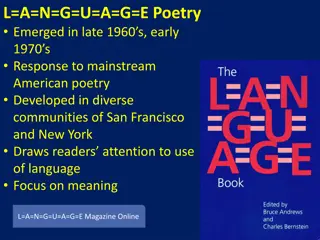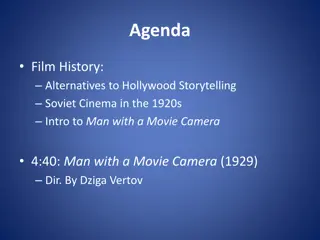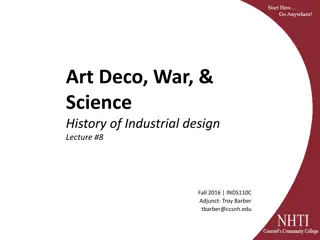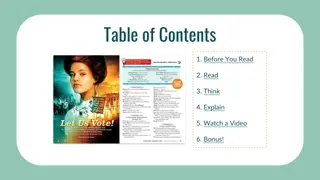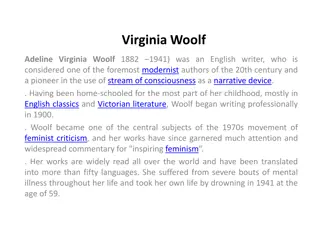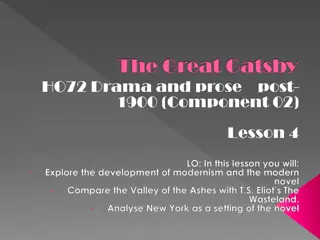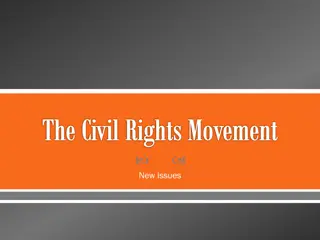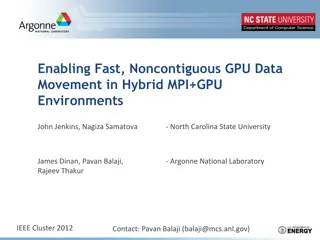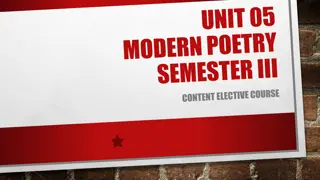High School Civil Rights Movement Escape Room
Engage high school students in an interactive escape room activity focused on key events and figures of the Civil Rights Movement. From segregation to landmark court cases and iconic protests, students will delve into the history through reading materials, questions, ciphers, and sorting tasks. This
2 views • 38 slides
Understanding Free Movement of Goods in the European Single Market
The European Single Market ensures the free movement of goods among its member states, prohibiting customs duties and equivalent taxes. The establishment of a customs union and harmonization of regulations play crucial roles. Despite the abolition of customs duties by 1968, further objectives like e
3 views • 16 slides
The Slow Food Movement: A Revolution in Food Culture
The Slow Food Movement, initiated by Carlo Petrini in 1986, challenges the fast food industry and advocates for mindful consumption. Petrini's vision promotes awareness of food sourcing, support for sustainable practices, fair compensation for producers, and the enjoyment of nutritious, flavorsome f
1 views • 17 slides
Prarthana Samaj
Prarthana Samaj, meaning "Prayer Society" in Sanskrit, was founded in 1867 by Atmaram Pandurang with the objective of promoting belief in one God and advocating worship of the same. The movement gained traction when Mahadev Govind Ranade joined, with intellectuals advocating social system reforms. I
5 views • 12 slides
Comprehensive Overview of Continuity of Business in FAD Outbreaks
Continuity of Business (COB), also known as managed movement, is a crucial strategy that allows the movement of non-infected animals and non-contaminated animal products during a Foreign Animal Disease (FAD) outbreak. This approach helps maintain normal business operations in agriculture and food in
4 views • 27 slides
Ernest Hemingway: Iconic Writer of the Lost Generation
Ernest Miller Hemingway, born in Oak Park, Illinois, was a prominent writer of the Lost Generation. His experiences in World War I influenced his writing style, marked by simplicity and objectivity. Moving to Paris, he mingled with Modernist artists and revolutionized American fiction. The Lost Gene
2 views • 24 slides
The Effectiveness of the Civil Rights Movement in Meeting the Needs of Black Americans up to 1968
Assessing the impact of the Civil Rights movement on Black Americans up to 1968 reveals significant progress in ending racial discrimination and segregation, securing voting rights, and advocating for social and economic equality. Despite achievements like the Civil Rights Act of 1964 and the Voting
0 views • 36 slides
Establishing Safety Standards in Non-Movement Areas at Smith Reynolds Airport
This guide outlines the purpose, definitions, rules, and safety measures for operating vehicles in non-movement areas at Smith Reynolds Airport. It emphasizes standardized ground movement practices to ensure the safety of airport patrons, reduce the risk of injury, and maintain a high level of safet
1 views • 12 slides
Evolution of Modern Poetry in the 20th Century
Modern poetry in English emerged in the early 20th century as a reaction to Victorian formalism. Modernists drew inspiration from diverse literary traditions, including Greek, Chinese, and Japanese poetry, to create works that depicted social changes and the impact of World War I. Themes of material
1 views • 7 slides
Exploring Modern Drama: History and Characteristics
Modern drama, revived in the early 20th century after a decline in the Victorian age, encompasses realism, plays of ideas, romanticism, and poetic elements. English drama during the modernist period is categorized into phases marked by influential playwrights like Henrik Ibsen, G.B. Shaw, T.S. Eliot
0 views • 9 slides
Biomechanics in Physical Education: Movement Analysis Overview
Biomechanics plays a crucial role in understanding movement and technique in physical education. This resource focuses on topics such as muscular contractions, lever systems, planes and axes of movement, and sports technology. It helps sports performers and coaches analyze movements for performance
1 views • 50 slides
Understanding Samuel Beckett's Waiting for Godot: A Modernist Masterpiece
Samuel Beckett, a prominent modernist writer, crafted the groundbreaking play "Waiting for Godot" as a tragicomedy in a theater of the absurd. Set in a vague time and place, the play reflects the post-World War II disillusionment and existential themes. Beckett's experimental approach challenges tra
1 views • 16 slides
Introduction to Passive Movement in Physical Therapy
Passive movement in physical therapy involves movements generated by external forces, such as therapists or machines, for patients unable to move actively due to various conditions. The practice aims to prevent complications from immobilization and maintain joint health and tissue mobility. Passive
2 views • 20 slides
Cooperative Movement and Growth in Sikkim
Sikkim, the 22nd state of India, showcases a thriving cooperative movement with significant growth in the number of cooperative societies over the years. The state economy primarily revolves around agriculture, with major crops like rice, maize, and oranges. The cooperative sector in Sikkim is robus
1 views • 9 slides
Exploring Motility in Prokaryotes: Flagellar, Spirochaetial, and Gliding Movements
Delve into the fascinating world of bacterial motility through three types of movements in prokaryotes: flagellar movement driven by rotating flagella, spirochaetial movement with flexible axial fibrils, and gliding movement observed in certain bacteria on solid surfaces. Additionally, discover how
1 views • 14 slides
Understanding Impressionism: Art Movement in the 19th Century
Impressionism emerged in the mid-19th century as a reaction against traditional French art standards. This art movement focused on capturing the essence of a subject through short, thick strokes of paint and vibrant colors applied side-by-side. Artists like Claude Monet, Pierre-Auguste Renoir, and o
0 views • 11 slides
Evolution of English Drama in the 20th Century: Shaw, Ibsen, and Modernist Theatre
The 20th century English drama witnessed significant shifts, from the realism and naturalism of George Bernard Shaw and Ibsen to the modernist theatre of Samuel Beckett, Tom Stoppard, and Harold Pinter. Themes of social change, rejection of traditional ideals, and a focus on human experiences domina
0 views • 39 slides
Haji Shariatullah and the Faraizi Movement in British India
Haji Shariatullah, an Islamic reformer born in 1781, founded the Faraizi movement in 1818 in British India to promote Islamic practices and protect tenants' rights. His early life, education in Arabia, and the significance of the Faraizi Movement in the revival of Islam are highlighted in this histo
0 views • 14 slides
Khilafat Movement in India: A Historical Perspective
The Khilafat Movement was a significant event in Indian political history, triggered by the British not fulfilling promises made to protect Turkey during World War I. The movement aimed to safeguard Turkey's holy places, restore its territories, and revive the Ottoman Empire. Despite efforts, includ
0 views • 30 slides
Understanding the Biological Basis of Human Motion and Motor Learning
In the biological basis of human motion, a series of electro-chemical-physical reactions occur at the neuromuscular junction, enabling nerve stimulation for muscle contraction. Nerve impulses for movement originate in the central nervous system or muscles, with acetylcholine transmitting impulses be
0 views • 13 slides
Overview of Quit India Movement and its Phases
The Quit India Movement was a significant event in India's struggle for independence, marked by various factors leading to its emergence, including the demise of the Civil Disobedience Movement and the rise of nationalist sentiments. The movement escalated in response to the outbreak of World War II
1 views • 9 slides
The Black Awakening: Challenges and Triumphs in African American Civil Rights Movement
In the early 20th century, influential leaders like Booker T. Washington and W.E.B. Du Bois led the fight for political and civil equality for African Americans. Despite facing obstacles such as segregation and disenfranchisement, groups like the Niagara Movement and NAACP emerged to promote racial
0 views • 7 slides
Imagism: A Brief Overview of a Modernist Poetry Movement
Imagism was a poetic movement that flourished in Britain and the United States between 1909 and 1917, aiming to break away from the sentimentality of Victorian poetry. Influenced by French symbolists and Japanese haiku, imagist poets like Ezra Pound and Amy Lowell focused on creating concise, vivid
3 views • 21 slides
The Quit India Movement 1942-1945: An August Movement
The Quit India Movement, also known as the August Movement or Do or Die Movement, was a mass protest on nonviolent lines in India from 1942 to 1945. Initiated by the Indian National Congress, it called for an immediate end to British rule in India. Led by leaders like Mahatma Gandhi, the movement ai
0 views • 16 slides
The Quit India Movement: A Pivotal Moment in India's Independence Struggle
The Quit India Movement, also known as the India August Movement, was a key event in India's fight for independence led by Mahatma Gandhi in 1942. This movement urged the British to grant India independence through peaceful non-violent protests. It called for an immediate end to British rule, the fo
0 views • 15 slides
Key Figures of Modernism in Literature
Explore the prominent figures of Modernism in literature, including T.S. Eliot, W.B. Yeats, James Joyce, and Virginia Woolf. Discover their significant works that shaped the Modernist movement and revolutionized the literary world.
0 views • 15 slides
The Literary Universe of James Joyce
James Joyce, the renowned Irish novelist, short story writer, and poet, crafted a fictional realm centered around Dublin, populated by characters reflecting individuals from his past. His works, including "Dubliners" and "Ulysses", delve into themes of national identity, epiphanies, and intricate na
0 views • 5 slides
Exploring L=A=N=G=U=A=G=E Poetry Movement of the Late 1960s and 1970s
The L=A=N=G=U=A=G=E poetry movement emerged in the late 1960s and early 1970s as a response to mainstream American poetry, focusing on diverse communities in San Francisco and New York. This avant-garde movement emphasized the use of language, drawing readers' attention to the nuances of meaning. No
0 views • 6 slides
The Waste Land by T.S. Eliot: A Modernist Masterpiece Examined
The Waste Land" by T.S. Eliot, published in 1922, is a seminal work of Modernist poetry that offers a bleak portrayal of modern life. This poem, heavily influenced by Ezra Pound's editing, delves into themes of societal decay, spiritual emptiness, and the search for renewal. Pound's collaboration wi
0 views • 26 slides
The Civil Rights Movement and Terence O'Neill's Demise (1964-1969)
The Civil Rights Movement in Northern Ireland, spearheaded by organizations like the Campaign for Social Justice (CSJ) and the Northern Ireland Civil Rights Association (NICRA), aimed to address widespread discrimination against Catholics. The movement advocated for electoral reform, an end to housi
0 views • 10 slides
Exploring Alternative Narratives in Early 20th Century Cinema
Delve into the world of Soviet Montage, German Expressionism, and French Impressionism as we examine the emergence of avant-garde filmmaking and modernist aesthetics in the 1920s. Discover the evolution of film history through experimental and documentary approaches, challenging traditional Hollywoo
0 views • 16 slides
Evolution of Design Movements: Art Deco, War Influence, and Industrial Progress
Explore the emergence of the Art Deco movement post-World War I, its fusion of modernist styles with luxury craftsmanship, and the impact of key figures like Hermann Muthesius on industrial design. Delve into the International Exhibition of Modern Decorative and Industrial Arts in 1925, showcasing a
0 views • 21 slides
Exploring Suffrage Movement Through Scenes and Questions
This comprehensive content presents a structured exploration of the suffrage movement through questions, images, and scenes from a play set in the early 1900s. Readers are encouraged to ponder reasons behind voting, attitudes towards the movement, and the impact of protest actions. The content delve
0 views • 13 slides
The Life and Legacy of Virginia Woolf
Virginia Woolf, an English writer and modernist pioneer, made significant contributions to literature with her innovative use of stream of consciousness. Despite battling mental illness, Woolf's works continue to inspire feminist critique and are celebrated globally. Educated in Greek, Latin, and hi
0 views • 10 slides
Analysis of Virginia Woolf's Novel "To the Lighthouse
Explore the themes, characters, and narrative structure of Virginia Woolf's novel "To the Lighthouse." Learn about the author's life, writing style, and key facts regarding the novel's publication. Delve into the three parts of the story, focusing on the Ramsay family dynamics and the character of L
0 views • 16 slides
Exploring Modernism and the Modern Novel in The Great Gatsby
This lesson delves into the development of modernism and the modern novel through a comparison of The Great Gatsby's Valley of the Ashes with T.S. Eliot's The Wasteland. It discusses the transition from Romanticism to Realism to Modernism in literature, highlighting how Fitzgerald merged poetic Roma
0 views • 7 slides
Challenges and Evolution of the Civil Rights Movement
The Civil Rights Movement faced new challenges in the 1960s, with urban African Americans struggling with racism, economic disparities, and social issues. The Kerner Commission highlighted systemic racism, while incidents like the Watts Riot underscored ongoing tensions. The movement also saw a shif
0 views • 11 slides
Rabindranath Tagore: The Iconic Man of Letters and His Political Stand
Rabindranath Tagore, the Nobel Prize-winning poet, novelist, and painter, was a modernist humanist who criticized extremist nationalism. He founded Viswa Bharati University as a radical educational experiment. The context of his time, including the Jallianwala Bagh Massacre and the Swadeshi Movement
0 views • 15 slides
Fast Noncontiguous GPU Data Movement in Hybrid MPI+GPU Environments
This research focuses on enabling efficient and fast noncontiguous data movement between GPUs in hybrid MPI+GPU environments. The study explores techniques such as MPI-derived data types to facilitate noncontiguous message passing and improve communication performance in GPU-accelerated systems. By
0 views • 18 slides
Exploring Modernist Poetry and Its Characteristics
Modernist poetry emerged mainly in Europe and North America between 1890 and 1950, marked by experimentation in form and themes. Modernist poets like T.S. Eliot focused on intellect over emotion, alienation, and isolation. The term "modern" in poetry encompasses various trends like stream of conscio
0 views • 11 slides




